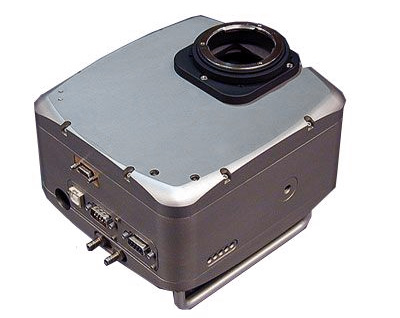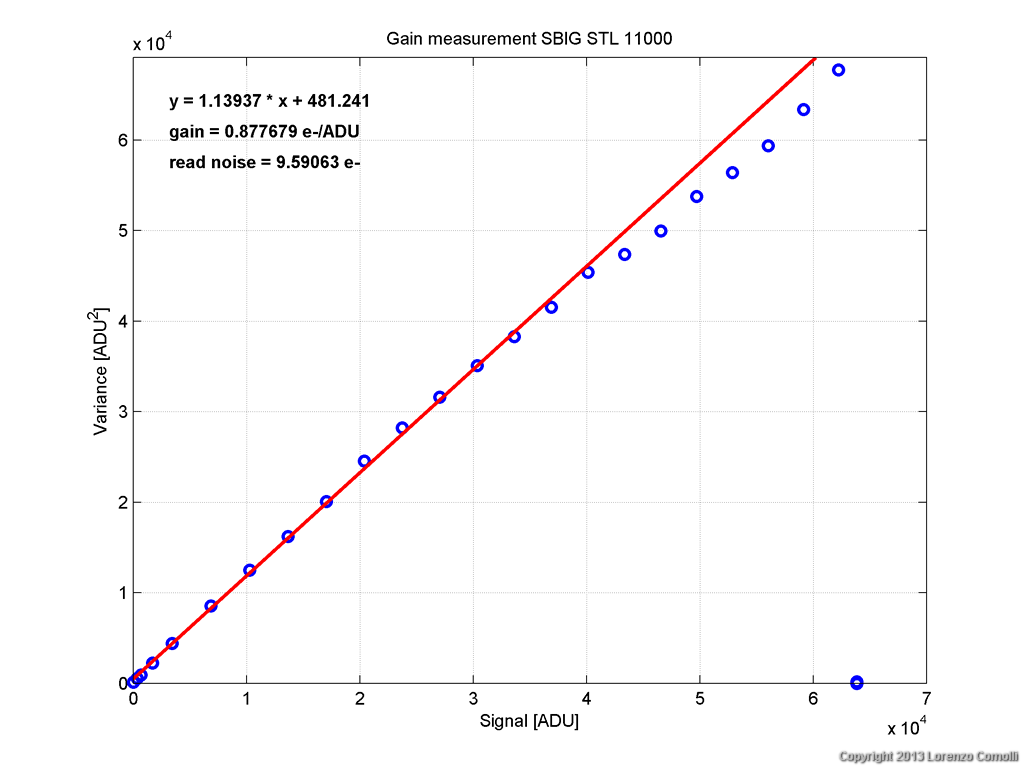|
by Lorenzo Comolli - Written in July 2013 |

Introduction
In this page you'll find a technical test. Please refer here for an introduction, details and testing method.
On this camera the sensitivity (gain) is fixed. The antiblooming trimmer was set at the default manufacturer value.
Main results
The analisys of the histogram of the brightness values show that all the brightness values are equally probable, proving that the ADC converter is a true 16 bit one and is working properly.
Table and graphs
In this page you'll find a technical test. Please refer here for an introduction, details and testing method.
On this camera the sensitivity (gain) is fixed. The antiblooming trimmer was set at the default manufacturer value.
Main results
-
Gain. The measured gain is near unity, a value that allow to fully gather the dynamic range of the sensor.
- Read noise. The value, at about 9.6 electrons,
is mainly due to the sensor. In fact the same sensor mounted in other
manufacturer cameras show similar values. So the electronics is good and
is not adding appreciable noise to the sensor data.
- Dynamic range. Considering a full well capacity of 64000 ADU, the approximate dynamic range is 75.3 dB , corresponding to about 5800 levels. This is not a top value, as expected because of the interline sensor, but it is larger than many DSLR, like Canon EOS 5D and 5DmkII.
- Linearity. From the linearity plot, and also the variance plot, a change in the slope of measured data is visible near 40000 ADU.
As well know in interline sensors, linearity starts to fall above about
1/2 of the full well capacity. So, for any scientific work, remember to
avoid values above this brigtness. And also keep your flat field below
this value.
The analisys of the histogram of the brightness values show that all the brightness values are equally probable, proving that the ADC converter is a true 16 bit one and is working properly.
Table and graphs
| Sensitivity | gain | read noise | Approx dynamic range |
| [e-/ADU] | [e-] | [dB] |
|
| - |
0.877679 |
9.59063 |
75.3 |


